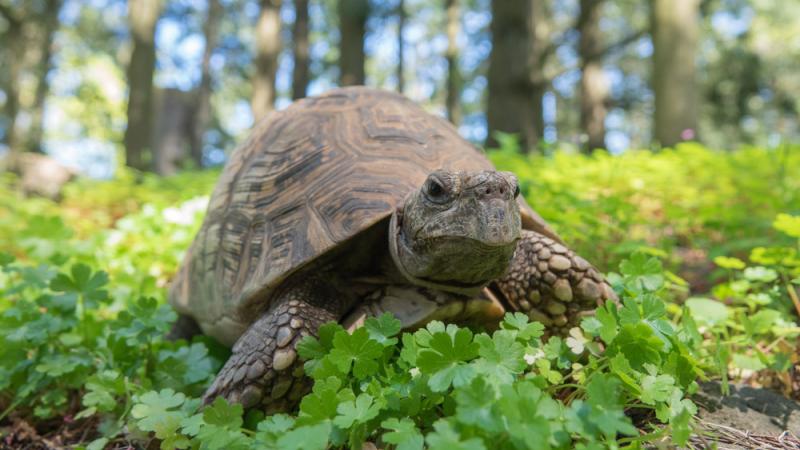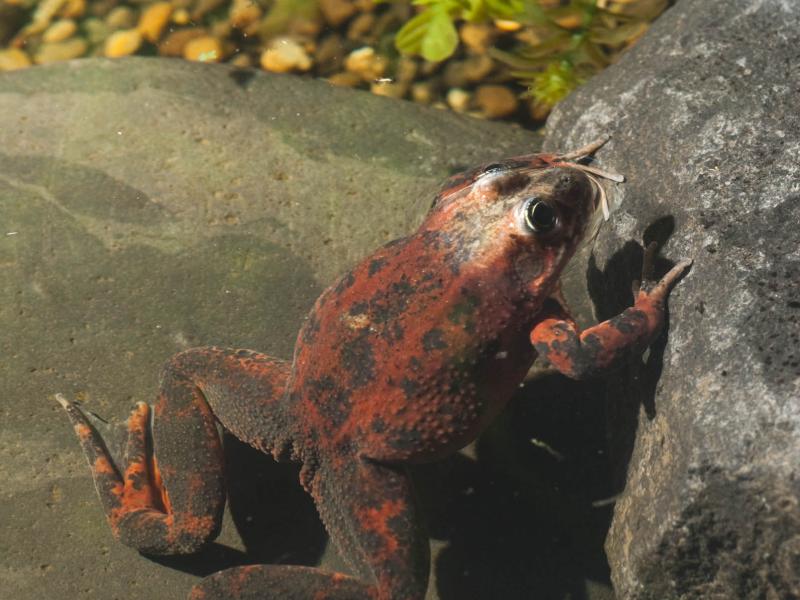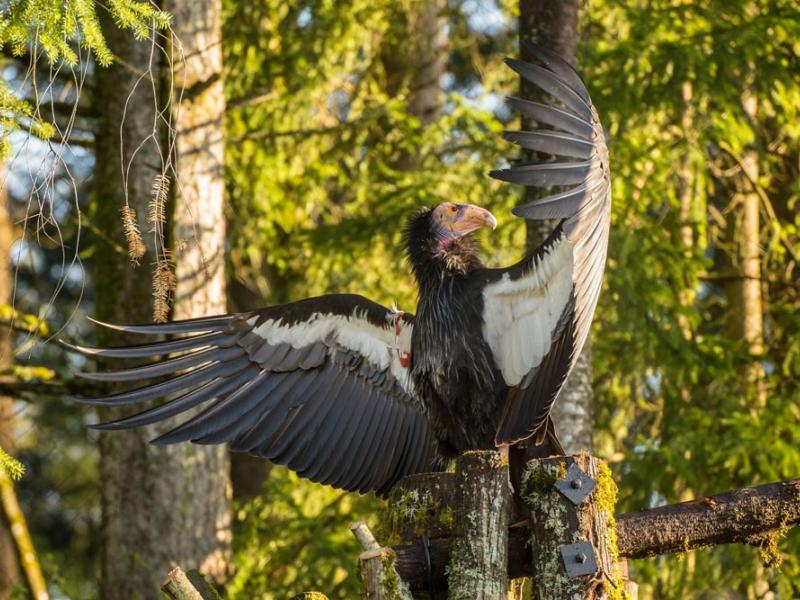
Desert tortoise behavior and facts
Desert tortoises forage for leaves, stems, flowers, seeds and grasses.
Their flattened front limbs are an adaptation for digging. They take shelter in burrows (either ones they dig or that were made by other animals) and rocks to regulate their body temperature and reduce water loss. They make nests at the entrance to their burrows.
Desert tortoises are inactive most of the year. They are most active at temperatures between 79 and 93 degrees following seasonal rains, when they move across 10- to 100-acre home ranges. They spend summers in estivation (a dormant or torpid state). This helps reduce water loss. Winter is spent in hibernation, which helps them survive freezing temperatures and low food availability.
Turtles and their eggs have many predators including Gila monsters, snakes, ravens, foxes, bobcats, coyotes, domestic dogs and more.
From birth to death
- Clutches: 0 to 3 each year of 4 to 6 eggs
- The number of clutches may be greater in years with above-average rainfall.
- Less than 75 percent of eggs hatch.
- Incubation: 84 to 120 days
- Only 2 to 5 percent of hatchlings reach maturity.
- Sexual maturity: 13 to 15 years
- Lifespan: 30 to 50 years
Vital statistics
Shell length: up to 16 inches
Status
CITES App. II, USFWS threatened. All species in genus Gopherus are threatened or endangered and highly protected in several states.
Desert tortoises, the Oregon Zoo and you
The zoo's desert tortoises are part of its education programs. They eat fruit, vegetables, and occasional meat and calcium supplements.
In the wild, humans have negatively impacted turtles: vehicles run over them, off-road vehicles destroy their habitat, cattle overgraze in turtle habitat, introduced grasses replace native vegetation and people hunt them.




